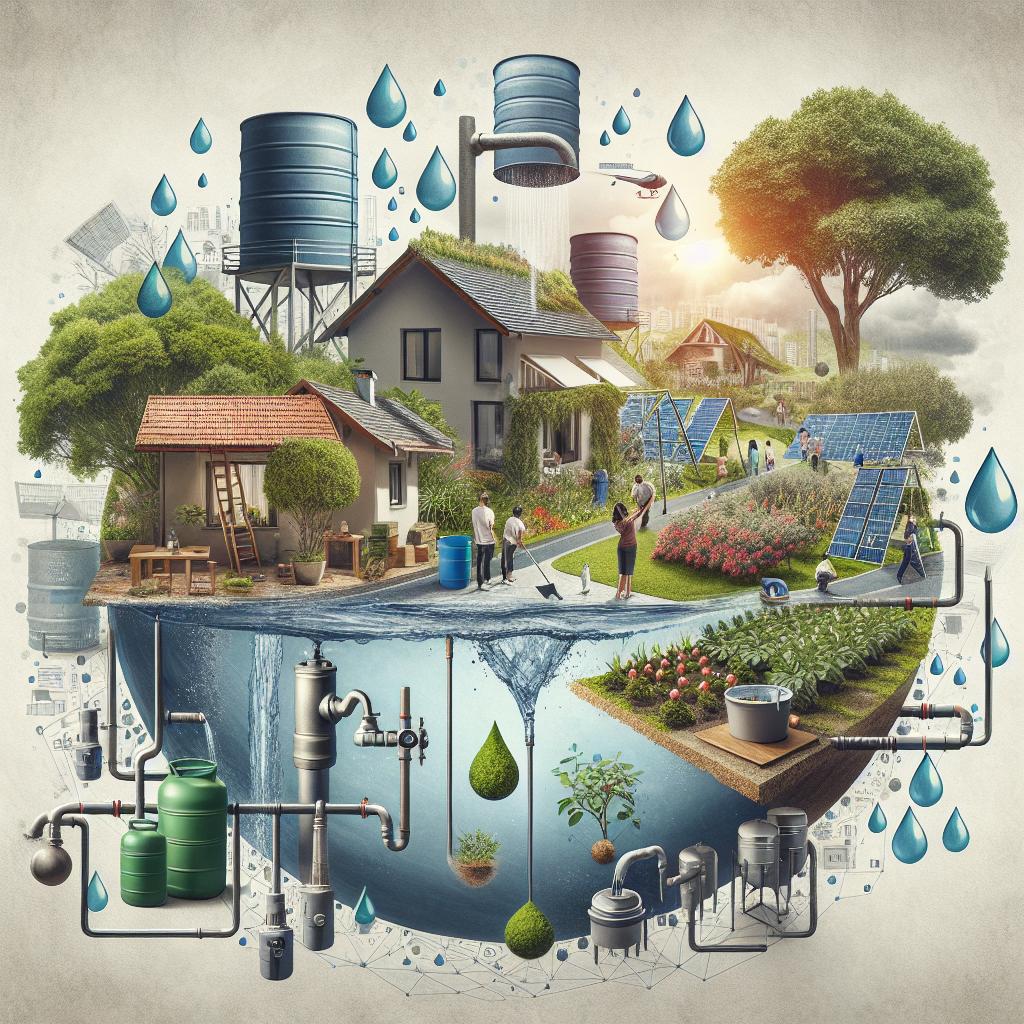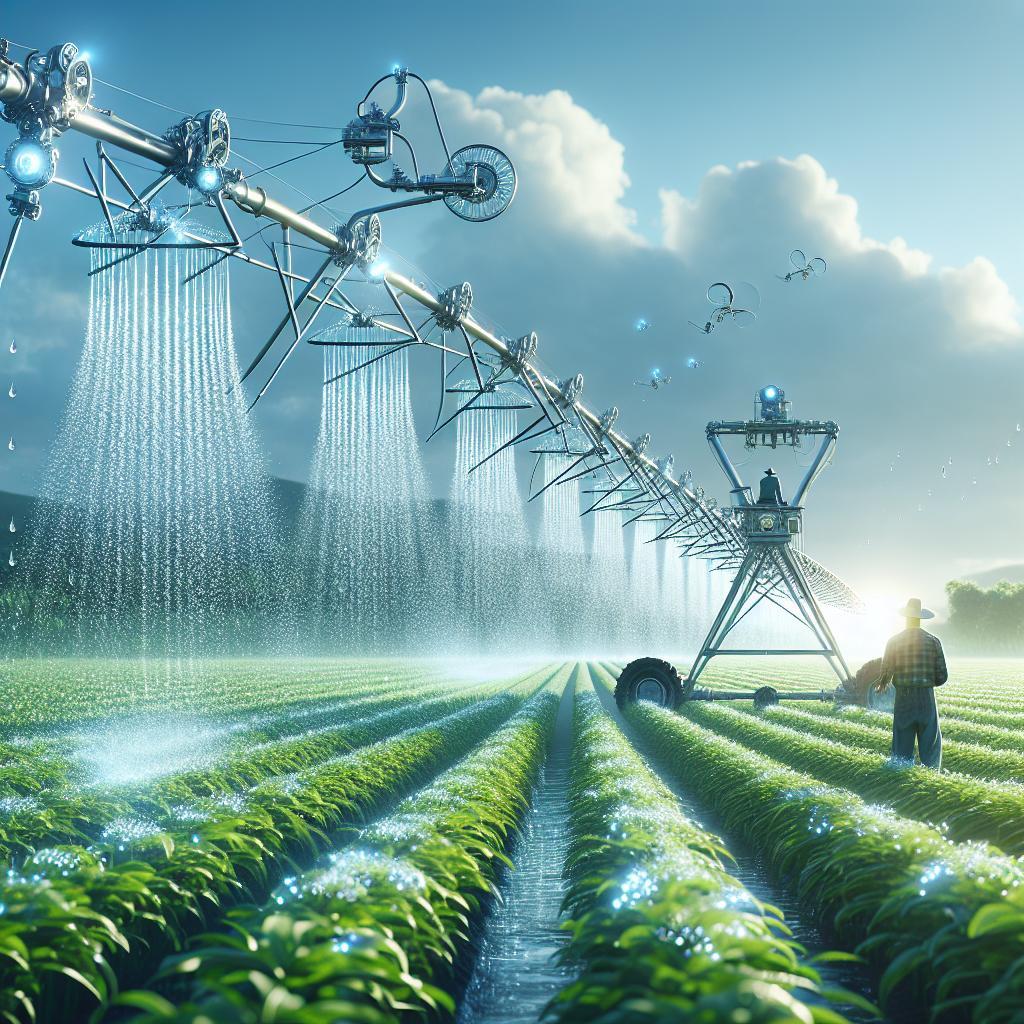This post may contain affiliate links which means I may receive a commission for purchases made through links. Learn more on my Private Policy page.
In the sprawling landscape of modern agriculture, where every droplet counts, the race toward sustainability has ushered in a new era of precision irrigation systems. Imagine a world where your crops recieve just the right amount of water they need to flourish, reducing waste and enhancing yields. With the rising challenges of climate change and resource scarcity, maximizing water request efficiency isn’t just smart—it’s essential. In this article, we’ll dive into the fascinating realm of precision irrigation, exploring innovative technologies and strategies that can help farmers achieve their goals. Whether you’re a seasoned agri-enthusiast or just dipping your toes in the world of farming, join us as we uncover the secrets to harmonizing nature and ingenuity, ensuring that every precious drop of water is used wisely. Let’s sprinkle some knowledge on how we can cultivate a greener future, one efficient irrigation system at a time!
Harnessing Technology for Smart Water Management
In the era of digital transformation, integrating technology into water management systems has never been more crucial. Precision irrigation systems harness cutting-edge technology to optimize water usage, ensuring crops receive the exact amount of water needed for healthy growth. By utilizing techniques such as soil moisture sensors, satellite imagery, and data analytics, farmers can now make informed decisions that significantly reduce water wastage. Benefits of these systems include:
- Water Conservation: Minimizes excess runoff and evaporation, promoting enduring practices.
- Increased Crop Yields: Tailors irrigation to specific plant needs, enhancing overall agricultural productivity.
- Cost Savings: Reduces energy and labor costs associated with traditional irrigation methods.
Furthermore, the integration of mobile applications into precision irrigation allows for real-time monitoring and adjustments, making it easier for farmers to respond to changing environmental conditions. These applications can display critical data such as weather forecasts, soil health, and crop stress indicators, all in one convenient platform. In addition, sharing best practices and insights among farmers fosters a collaborative approach to water management. A brief comparison of traditional vs. precision irrigation highlights the transformational benefits:
| aspect | Traditional Irrigation | Precision irrigation |
|---|---|---|
| Water Usage | Higher | Optimized |
| Crop Monitoring | Manual | Automated |
| Cost Efficiency | Low | High |

The Science Behind Drip Irrigation: A Deep Dive
Understanding the mechanics of drip irrigation unveils the intricate relationship between water management and plant health. This system operates on the principle of delivering water directly to the roots of plants, significantly reducing evaporation and runoff. Key components include:
- Drippers: These devices control the flow rate of water, ensuring that each plant receives the optimal amount.
- Piping and Tubing: A network designed to transport water efficiently across the field, connecting water sources to drippers.
- Filtration Systems: Essential for maintaining clean water flow,protecting against clogs and ensuring consistent performance.
The science behind this methodology highlights its efficiency in water application. Drip irrigation systems can achieve uniform water distribution, promoting healthier plant growth while conserving water resources. Studies show that by implementing these systems, farmers can reduce water usage by up to 60%, all while increasing crop yields. In addition, the reduction of water stress leads to:
- Improved Nutrient Uptake: Water delivered directly to the root zone enhances nutrient absorption.
- Reduced Weed Growth: targeted watering minimizes moisture in non-plant areas, discouraging weed proliferation.
- Customized Irrigation plans: Tailoring water delivery according to specific plant needs and environmental conditions maximizes overall effectiveness.

Tailoring Irrigation Strategies to Crop Needs
Understanding the specific water requirements of different crops is fundamental to optimizing irrigation strategies. Every plant species has unique physiological traits that dictate its moisture needs, influenced by factors such as growth stage, soil type, and local climate conditions. By carefully analyzing data from soil moisture sensors and climate models, farmers can implement tailored irrigation plans that address these unique needs. This approach allows for precise watering schedules, ensuring that crops receive the right amount of water at the right time, thereby maximizing growth and yield while minimizing waste.
To enhance water application efficiency, consider employing techniques such as:
- Drip irrigation: Delivers water directly to the plant roots, reducing evaporation and runoff.
- Smart scheduling: Uses weather forecasts and moisture data to optimize the timing and amount of irrigation.
- Soil moisture monitoring: Provides real-time feedback to adjust water applications based on current soil conditions.
| Crop Type | Water Requirement (mm/week) |
|---|---|
| Corn | 25-30 |
| Tomatoes | 20-25 |
| Wheat | 15-20 |
By continuously monitoring these factors and adjusting irrigation strategies accordingly, growers can achieve sustainable water management. This not only conserves resources but also enhances crop resilience, ultimately leading to improved profitability. Every drop counts when it comes to agriculture, and embracing precision techniques could mean the difference between thriving and merely surviving in today’s competitive farming landscape.

Sustainable practices for long-Term Water Efficiency
To ensure long-term water efficiency in agricultural practices, adopting innovative irrigation methods is crucial. Precision irrigation systems help in applying water in a targeted manner, reducing wastage and enhancing crop yield. Implementing these systems can lead to important benefits, such as:
- Reduced Water Use: Efficient systems can decrease total water consumption by ensuring only the necessary amount is delivered to crops.
- Improved Crop Health: When crops receive the right amount of moisture at the right time, their resilience and productivity increase.
- Energy Savings: Lower water usage translates to less energy required for pumping, contributing to overall sustainability.
Incorporating smart monitoring technologies also plays a pivotal role in achieving long-term efficiency. Soil moisture sensors, weather stations, and automated controllers can help farmers adjust their irrigation practices based on real-time data, optimizing water usage. The following table outlines key technologies and their benefits:
| Technology | benefits |
|---|---|
| Soil Moisture Sensors | Provide real-time insights on soil moisture levels |
| Weather Stations | Help predict rainfall and temperature changes to adjust irrigation timing |
| Automated Controllers | Enable precise irrigation management without manual intervention |
Key Takeaways
In closing, as we navigate the landscape of modern agriculture, it’s clear that embracing precision irrigation systems is not just a trend—it’s a vital step towards sustainable farming. by maximizing water application efficiency, we’re not only nurturing our crops but also protecting our precious water resources for future generations. As you embark on your journey to implement these innovative techniques, remember that every drop counts. Together, let’s cultivate a greener, more sustainable world where farmers thrive and every plant flourishes.
So, grab that soil moisture sensor, optimize those irrigation schedules, and join the growing community of precision thinkers who are redefining what it means to be responsible stewards of the land. Here’s to a bountiful harvest ahead—may your fields be fruitful and your water usage efficient! Happy irrigating!
This post may contain affiliate links which means I may receive a commission for purchases made through links. Learn more on my Private Policy page.

